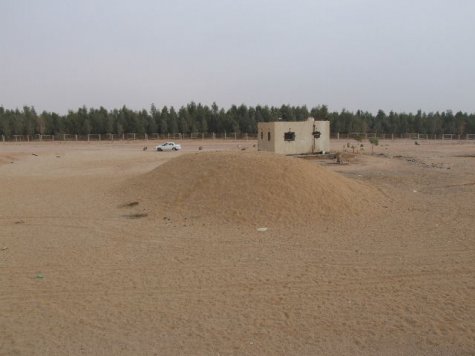Black Storks (November 30th)
Photo by Toomas Mikkor
The black stork transmitters switched over to their winter programs beginning November 20th (in the name of saving expenses), which means that information will be sent every ten days (or less often—should light fail us) through the end of February. The solar panels don't charge if a feather is covering them.
As of today, the birds under our surveillance have been generally stationary. But surprises can happen.
The biggest surprise is obviously connected to Piia. Eagle Club members Georg and Gunnar went to the Sinai Peninsula looking for Piia's transmitter, which went silent October 7th. They didn't find the transmitter, but when they returned they found Piia's transmitter had sent signals from a variety of positions during the very time they were on their way home (November 8-12). The signals pointed to a place near a sewage pond, where our men had passed every day of their search.
A building and sandpile from where Piia's recent signals originated…
Everywhere in the world you can find an Estonian, and Toomas, who works in the Sinai as a guide, agreed to go and see what he could find of Piia's transmitter, or perhaps even meet the bird herself. But this unfortunately didn't happen, and Piia's whereabouts still remain unknown…
Piia's mate Priidu has managed in the past week to visit the Central African Republic and return to the Sudan. He made similar trips last year. All the migration data are collected on the map below. If you enlarge it you can see the shorter movements in the wintering grounds:
Click to enlarge map








